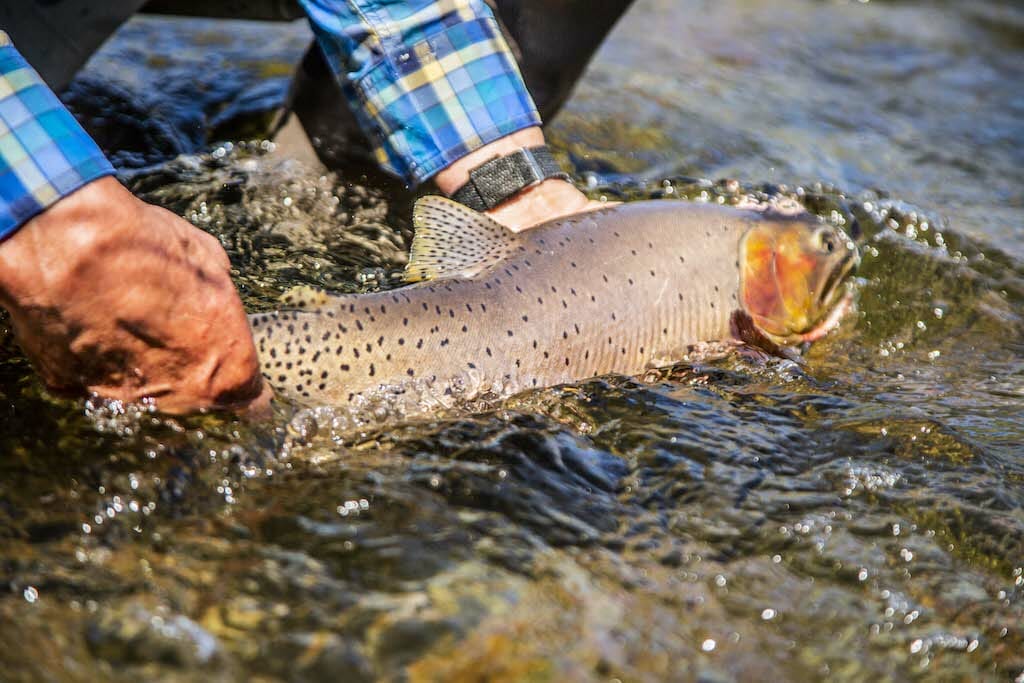By Dave Sweet
“Victory on Yellowstone Lake is within our grasp!”
Those words came from Dr. Michael Hansen during the Science Review Panel meetings held last week on the Yellowstone Cutthroat Recovery in Yellowstone Lake project.
Hansen is the recently retired supervisory research fisheries biologist for the Great Lakes Science Center of the United States Geological Survey and longtime member of the Science Review Panel for the fisheries of Yellowstone National Park.
“Nowhere else has seen the kind of adult lake trout collapse at the rate that has been achieved on Yellowstone Lake; not on the Great Lakes, not on Lake Pend Oreille,” Hansen said.
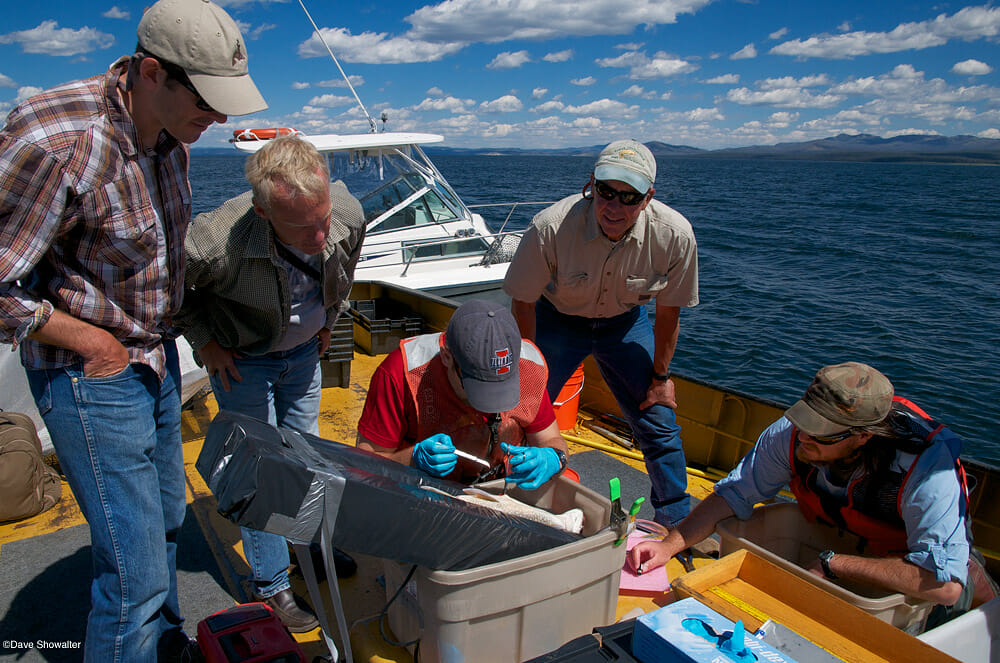
When I heard these statements and saw the data for myself, it was hard to contain my excitement. I have been working on Yellowstone Lake for 12 years volunteering on the system, fundraising and trying to spread the word about the possibility of losing one of the most important native cutthroat trout populations on the planet.
The Science Review Panel recently met — online due to the coronavirus quarantine — to review the suppression of invasive lake trout and the recovery of Yellowstone cutthroat trout in Yellowstone Lake. The intensive gill netting effort has reduced the adult lake trout numbers (age 6 and older, those that prey the most on the cutthroats) to 10 percent of their peak population from just eight years ago (see graph below).
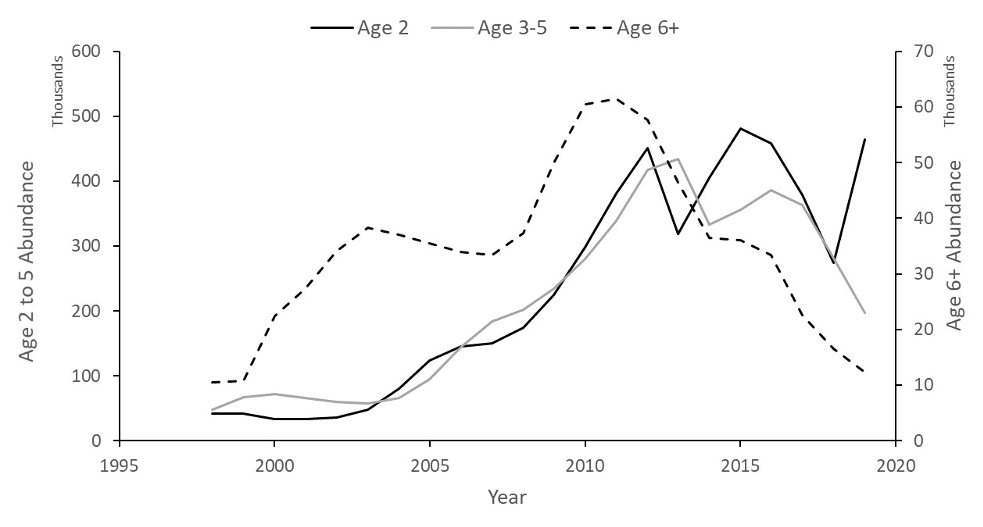
These adult and sexually mature fish now represent only about 2 percent of the total lake trout population in the lake. The fishing mortality has been incredibly high.
“This is extraordinarily good news,” Hansen said, indicating this information sets the program up for achieving a level of success that could hardly be imagined a decade ago.
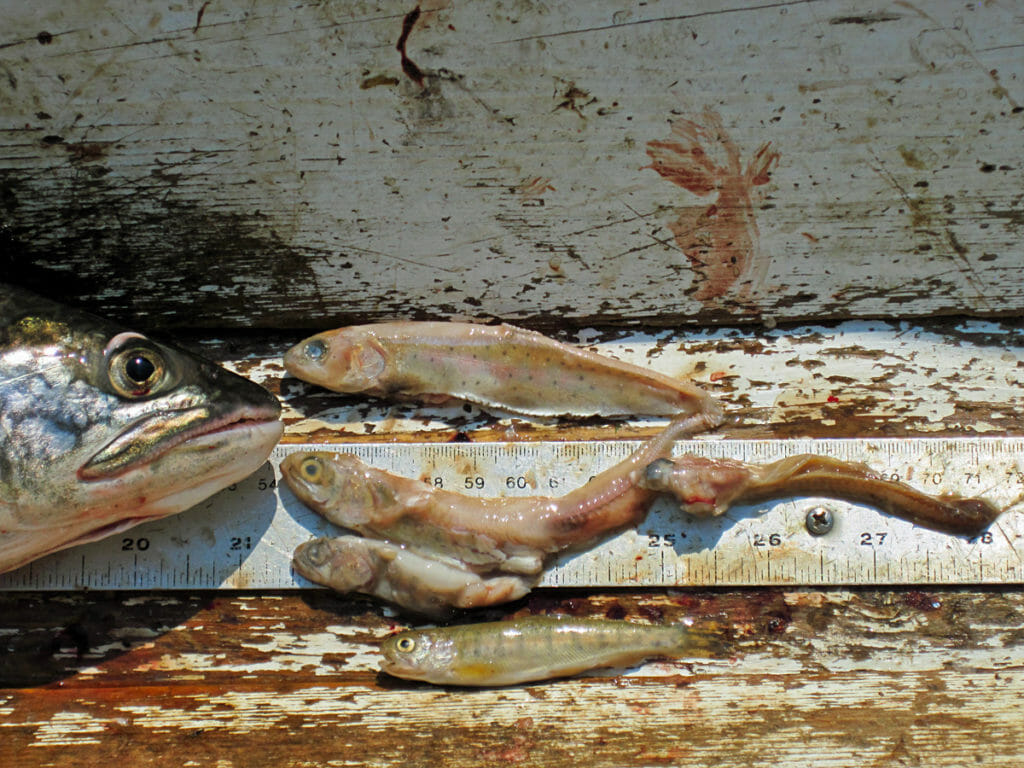
The goal has been to reduce the sub adult (age 3-5) and adult (age 6 and older) lake trout to 100,000 or less. That goal is now predicted to be achieved by 2024 if the current level of netting is maintained.
The juvenile lake trout population (those age 2 and younger) continues to remain fairly high, but this is totally predictable for a crashing population according to Hansen.
Recruitment of young lake trout has been extremely erratic year to year according to the data, but is typical of “classic compensation of a declining adult population” according to Hansen.
Today’s young lake trout represent the results of spawning two and a half years ago and those numbers will decline very fast in the next few years as fewer and fewer adults are available to spawn.
“We have to keep up with these waves of juveniles, but the netting program is set up to do just that. These waves of juveniles won’t last,” Hansen said.
Once the goal of 100,000 or fewer age 3 and over lake trout is achieved, gill netting can be reduced to about 60 percent of the current levels according to the models presented at the meeting.
With this reduction in netting comes equal financial savings. Currently the netting effort costs about $2 million per year, much of which is provided by donors who greatly treasure this incredible resource and ecosystem. Further savings are possible by seasonal adjustments to gill netting and by optimizing gill-net mesh sizes.
But make no mistake, for the foreseeable future there will have to be a “maintenance” level of netting will be needed for the foreseeable future to keep the lake trout under control. This is the price that must be paid to maintain and sustain this important Yellowstone cutthroat trout population. Total eradication of the lake trout is not likely possible with today’s technology. Perhaps one day, but not now.
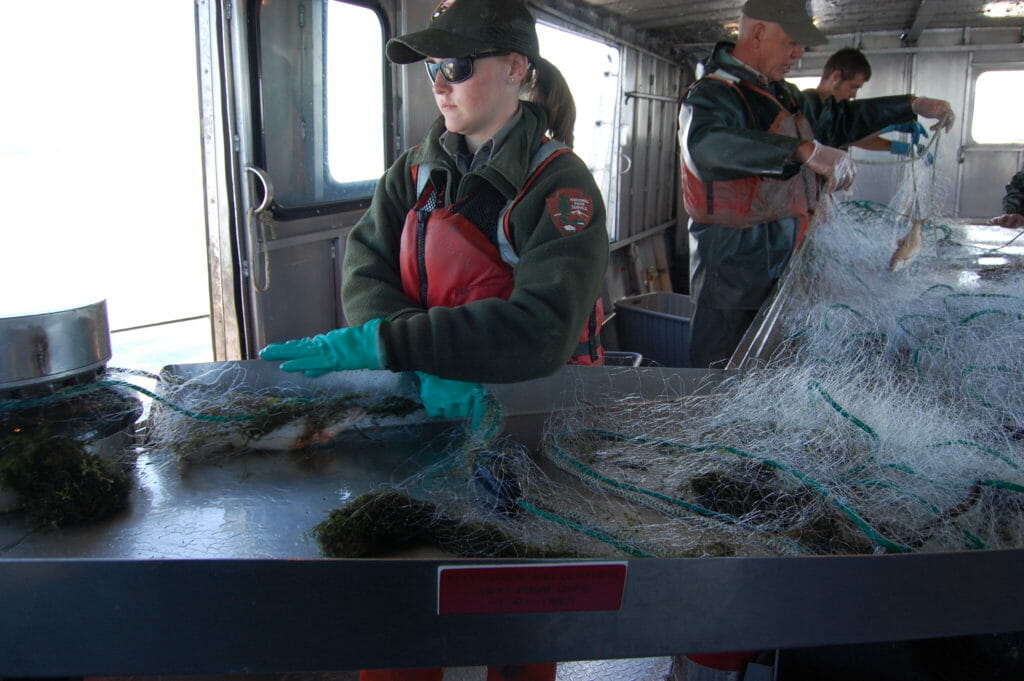
Alternative suppression was also on the agenda of the Science Review Panel. Although research has shown the potential to reduce lake trout recruitment by dumping either carcasses or carcass analog pellets on spawning beds, there are a number of problems to overcome. The panel recommended current research continue as alternative suppression may become a valuable part of the maintenance level of lake trout suppression.
Of course, we must remember that the purpose of lake trout suppression is to allow Yellowstone cutthroat trout to recover in the system. The population has increased steadily over the last several years after decades of decline; however, the increases haven’t been as dramatic as might be hoped.
The numbers of young cutthroat have shown the biggest increases and the average size of the cutthroats is clearly larger than historical. By-catch of cutthroats in the lake trout netting is likely slowing the overall population recovery and this by-catch has risen as the netting effort and the cutthroat population have both increased. As we move into a lower maintenance level of netting and with fewer adult, predacious lake trout present, the cutthroat numbers should increase at a faster pace.
Yellowstone National Park Superintendent Cameron Sholly received the good news at the wrap-up session of the meeting and expressed his gratitude to the panel for their leadership and insight, to those who have donated to the suppression effort, and to his fisheries staff for their persistence in protecting and restoring this iconic resource.
“This resource is at the top of my list for continued funding in these times of tightening budgets and uncertainty caused by the coronavirus,” Sholly said.
Dave Sweet is the Yellowstone Lake Special Project Manager for Wyoming Trout Unlimited. He lives in Cody, Wyoming, and serves on the board of the East Yellowstone Chapter of Trout Unlimited as well as the Wyoming Council of Trout Unlimited.



